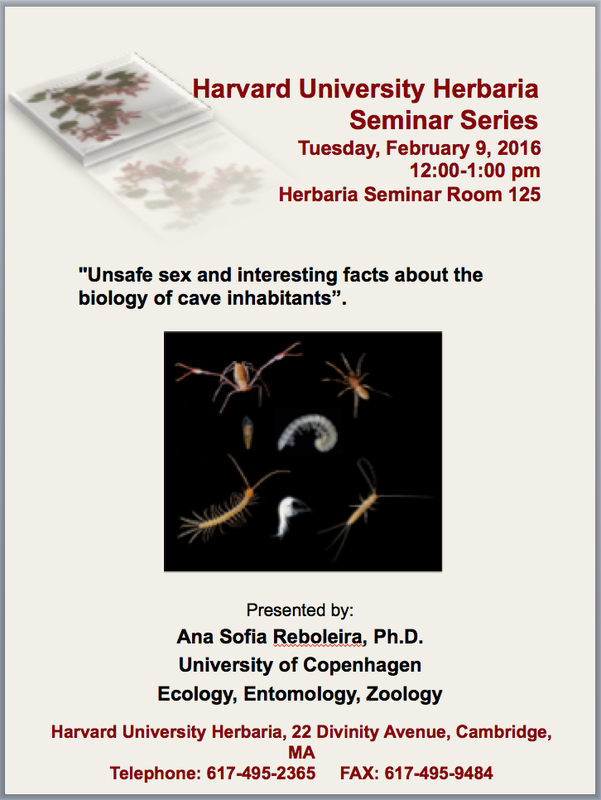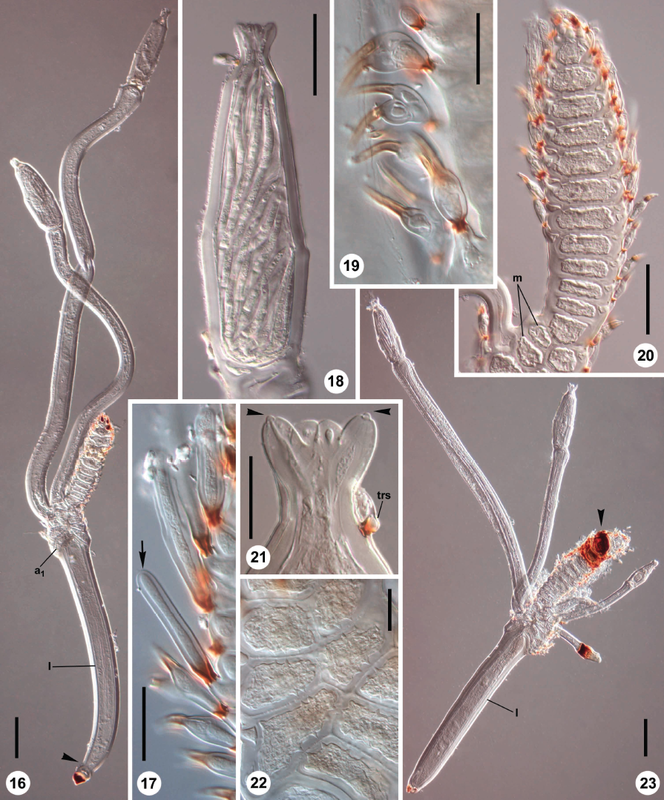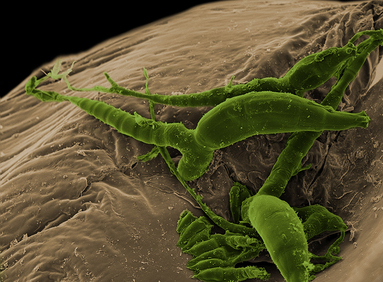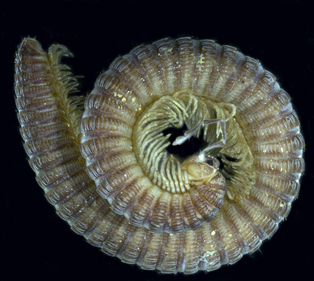|
More information: http://huh.harvard.edu/event/ana-sofia-reboleira-phd
Hidden biodiversity revealed by collections-based research - Laboulbeniales in millipedes: genus Rickia Rickia gigas Santam., Enghoff et Reboleira, 2016 on Archispirostreptus gigas (Peters, 1855) Abstract
Nine new species of the genus Rickia parasitizing Diplopoda are described: R. appendicifera from Iran on Chiraziulus, R. candelabriformis from Australia and New Zealand on several Spirostreptida, R. galatheae from New Zealand on Eumastigonus, R. gigas from Tanzania on ‘Spirostreptus’ and Archispirostreptus, R. lophophora from Tanzania on some genera of Spirostreptidae, R. obelostrepti from Tanzania on Obelostreptus , R. odontopygiidarum from Tanzania on Odontopygidae, R. platessa from Singapore and Thailand on Pachybolidae, and R. rhynchophora from Australia on Trigoniulus. This nearly triples the previously known number of species of Rickia species on millipedes; all 14 species are treated in this study with photomicrographs, additional observations on previously described taxa and comments. A key to these species is also provided. The Laboulbeniales species were found on millipede specimens preserved mostly at the Natural History Museum of Denmark, from samples collected between 1916 to the present. Reference: Santamaria S., Enghoff H. & Reboleira A.S.P.S. (2016). Hidden biodiversity revealed by collections-based research - Laboulbeniales in millipedes: genus Rickia. Phytotaxa, 243(2): 101-127. http://dx.doi.org/10.11646/phytotaxa.243.2.1 [pdf] Redescription of Lusitanipus alternans (Verhoeff, 1893) (Diplopoda, Callipoda, Dorypetalidae) and ecological data on its Laboulbeniales ectoparasites in caves Diplopodomyces veneris Lusitanipus alternans ABSTRACT
The Portuguese endemic callipodidan millipede Lusitanipus alternans (Verhoeff, 1893) is redescribed, based on abundant new material collected in caves of central Portugal. The species is illustrated with comprehensive SEM images. The relationships of the genus Lusitanipus Mauriès, 1978 to other callipodidan genera of the subfamily Cyphocallipodinae Verhoeff, 1909 are discussed. The major part of the studied material is highly infected with ectoparasitic fungi of the order Laboulbeniales, we also include information about the infection in the subterranean ecosystem. Reference: Reboleira A.S.P.S. & Enghoff H. (2015). Redescription of Lusitanipus alternans (Verhoeff, 1893) (Diplopoda, Callipoda, Dorypetalidae) and ecological data on its Laboulbeniales ectoparasites in caves. Zootaxa, 3957(5): 567–576. http://dx.doi.org/10.11646/zootaxa.3957.5.5 |
Dimidium facti qui coepit habet: sapere aude
Archives
January 2024
Categories
All
|




 RSS Feed
RSS Feed
